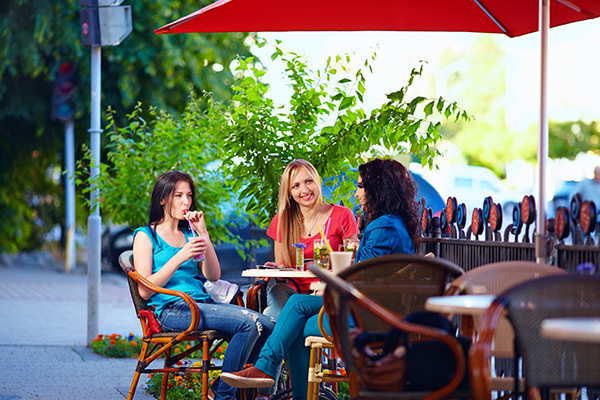As crowding in Amsterdam’s Red Light district continues, Mayor Femke Halsema, in a letter to the Amsterdam City Council, has announced a slew of new restrictions aimed at reducing this. The restrictions that will be implemented will include, but are not limited to, catering establishments removing their terrace extensions, stricter alcohol bans, and crowd control, possibly with turnstiles.
Considering the recent Easter weekend, Halsema, in Het Parool newspaper, emphasized the great impact of tourism and the way it puts pressure on the city centre and surrounding areas. Halsema claims that the “critical limit” for disturbance caused by swarms of tourists has been reached. “King’s Day and Pride are exceptional days that belong to the capital, but the beautiful historic centre where people live should not be permanently used as an amusement park,” she says.
According to Het Parool, from this month onwards, catering establishments in the Red Light district and the Nieuwmarkt will have to reduce their terraces. They were allowed to expand their catering areas during the Covid pandemic in a move to help the severely impacted hospitality industry. This terrace extension was temporary, and the inconvenience that tourists are now causing must be considered. “The rapidly increasing number of visitors and the nuisance this entails put unacceptable pressure on public space and the quality of life in the Red Light district,” says Halsema.
Alcohol prohibition and one-way traffic moves
Additionally, a comprehensive alcohol sales prohibition will put in place, meaning no alcoholic beverages can be sold after 4 PM from Thursday through Sunday.
Given the increasing number of visitors and tourists, the municipality of Amsterdam will implement greater crowd management with immediate effect. One-way traffic is being implemented in several alleys in the Red Light district, as was already the case during the pandemic. In this period, traffic support workers steered tourists in the right directions at the canal and alley ends. This one-way traffic system should result in visitor numbers to the area being reduced to 70% of the numbers seen in 2019.
Additionally, the city is considering whether turnstiles could be installed here to let visitors enter and leave the Red Light district. Furthermore, drug dealers on the streets will be subjected to increased enforcement.
Amsterdam’s previous efforts to curb crowds
In recent years, the city council has taken a number of steps to reduce and manage crowding. For instance, pub crawls and guided tours in the Red Light district are outlawed, and no alcohol may be consumed on the street. However, these were not sufficient to reduce nuisance to an acceptable level.
Halsema says she is still working on additional measures, that may include an even stricter alcohol sales ban and an earlier closure time for cafes, bars and entertainment venues.
In addition, Halsema is working on implementing medium- and long-term initiatives to change the city centre’s economic structure and monoculture. Although the city council opposes it, the mayor supports a temporary coffee shop ban for tourists. This follows research that unveiled that 58% of foreign tourists visiting Amsterdam do so only for the purpose of consuming cannabis.
The city is also looking for a new site for sex workers outside of the city centre, so that the Red Light district may be closed. According to Halsema, there is a shortlist of eight potential locations, which she will soon update the council on. “These steps require further elaboration, including the necessary police and enforcement capacity, logistical preparation and legal preparation,” explains Halsema.
Additionally, some promotion agencies, such as amsterdam&partners, have published online information campaigns to boost awareness of “desired behaviour” by tourists visiting the city.
Overall, Halsema says, the city cannot refuse people who want to visit, but it is working to increase cultural tourism and reduce nuisance for its residents.
Written by Nicole Kerr
